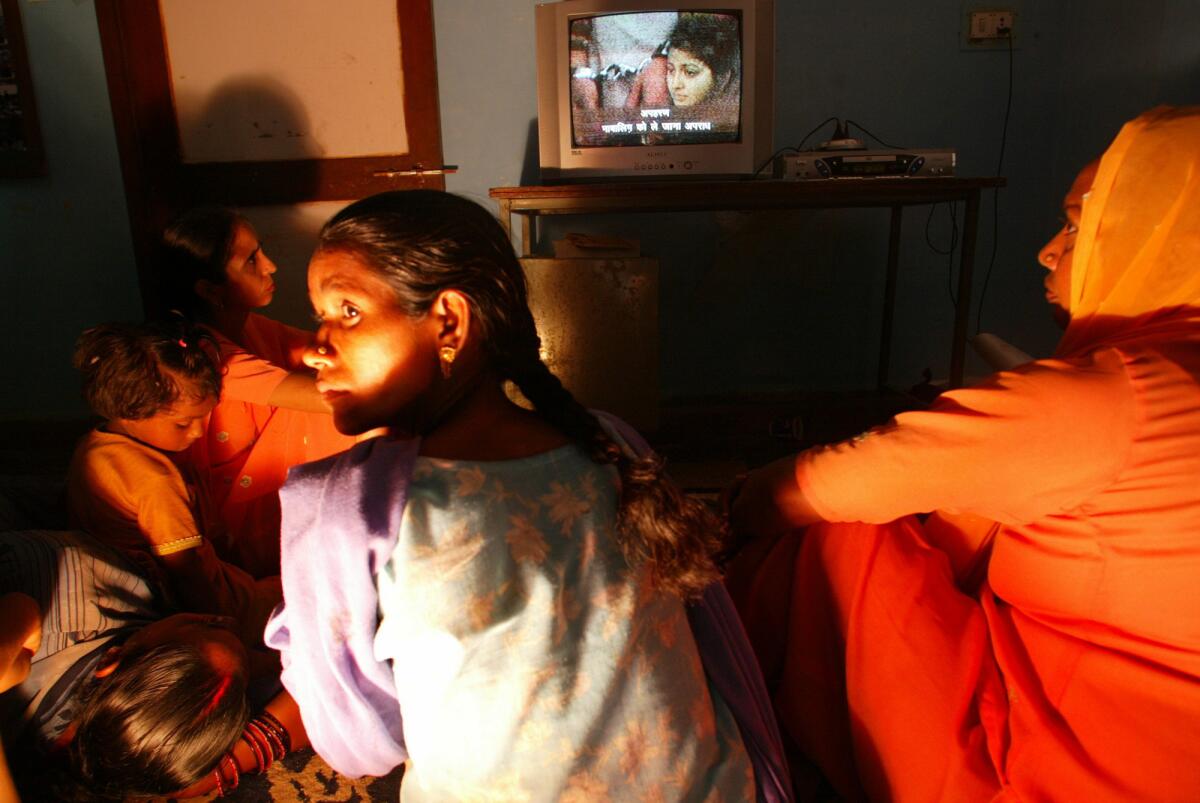India ‘dowry deaths’ still rising despite modernization

- Share via
Crime statistics and a Gender Scorecard compiled by women’s rights activists have put chilling new perspective on an age-old social ill in India: Bride-burning and other “dowry crimes” take the life of a woman every hour.
Despite a rapidly expanding middle class, enviable economic growth and measurable strides in modernization since India’s 1947 independence, dowry deaths continue to rise year on year, as does the related plague of “cruelty by husband and relatives” -- the crime defined as torture committed against women in pursuit of more marriage bounty from their parents.
India’s National Crime Records Bureau last week reported that 8,233 Indian women were killed in 2012 in dowry-related violence, or nearly one per hour. The incidence of dowry deaths grew by nearly 3% over the previous five years, and torture at the hands of a husband or family increased by 5.4%, with 99,135 cases reported by survivors in 2011.
The scope of the problems is likely to be wider than the statistics suggest, as many women and their parents are reluctant to seek prosecution for fear of scandal that would destroy their other daughters’ chances of getting married, analysts say.
Sociologists and women’s rights advocates attribute the disturbingly persistent trends to rising consumerism in India, where once-scarce and unaffordable goods like appliances and motor vehicles are now available but still beyond the reach of many families.
Bride-burning and other fatal attacks over disappointing dowries began tapering off after independence as education and income levels began a slow rising trend, said Vishakha Desai, a former president of the Asia Society and professor at Columbia University’s School of International and Public Affairs.
In 1961, Parliament passed the Dowry Prohibition Act, banning the payment of dowries as a condition for marriage. But the law is widely ignored, said Desai, especially among those newly elevated from poverty to the middle class.
“What has happened in the last 25-30 years as India has become much more conscious of material possessions is that it has come back with a vengeance,” she said of the fatal abuses. “You have dowry demands for things like a refrigerator or a motor scooter. It’s no longer about jewelry or things a woman could hold on to as her own.”
For centuries tradition dictated that the bride’s family provide her with gold, jewelry and a trousseau as she left her parental home to live with her in-laws, a way of ensuring her a degree of economic security, said Desai.
In many ways modernization has made the problem worse, she noted. Online dating services in India make it easier for parents to check out the social and economic status of potential spouses for their children and vet their preferred candidates before the prospective couples even meet.
The persistent abuse of young brides by in-laws seeking more dowry is just one of numerous dangers faced by women that has been detailed in the 2013 Gender Scorecard compiled by Radha Kumar of the Delhi Policy Group think tank.
Another disturbing trend is the falling “sex ratio” in India, where there are now only 940 women for each 1,000 men because of a cultural preference for boys over girls. The gender determination now available from ultrasound early in a pregnancy apparently has led to more terminations of female fetuses, analysts have concluded.
The Gender Scorecard also noted that prosecution and conviction rates for crimes against women are abysmally low and discourage already reluctant victims from seeking justice. Convictions are secured in only 24% of rape cases and the rate is 33% for those accused of killing women in the course of trying to extort more dowry from their families, Kumar said in a televised discussion on violence against women on NDTV.
Suman Nalwa, of the Delhi Police unit responsible for crimes against women and children, told the Press Trust of India that violence by those in pursuit of dowries is seen at all economic levels.
“The higher socio-economic strata is equally involved in such practices,” she said. “Even the highly educated class of our society do not say no to dowry. It runs deep into our social system.”
Ranjana Kumari, another women’s rights activist, laid the blame for barbaric attacks on young brides to a “culture of greed” that pervades all levels of Indian society.
“Marriages have become commercialized. It’s like a business proposition where the groom and his family make exorbitant demands,” she was quoted as saying by the Times of India. “And the wealthier the family, the more outrageous the demands.”
ALSO:
Senate committee votes to authorize military strike in Syria
Putin promises no discrimination against gays at Russia Olympics
Opposition behind massive power outage, Venezuela’s leader declares
A foreign correspondent for 25 years, Carol J. Williams traveled to and reported from more than 80 countries in Europe, Asia, the Middle East and Latin America.
More to Read
Sign up for Essential California
The most important California stories and recommendations in your inbox every morning.
You may occasionally receive promotional content from the Los Angeles Times.











